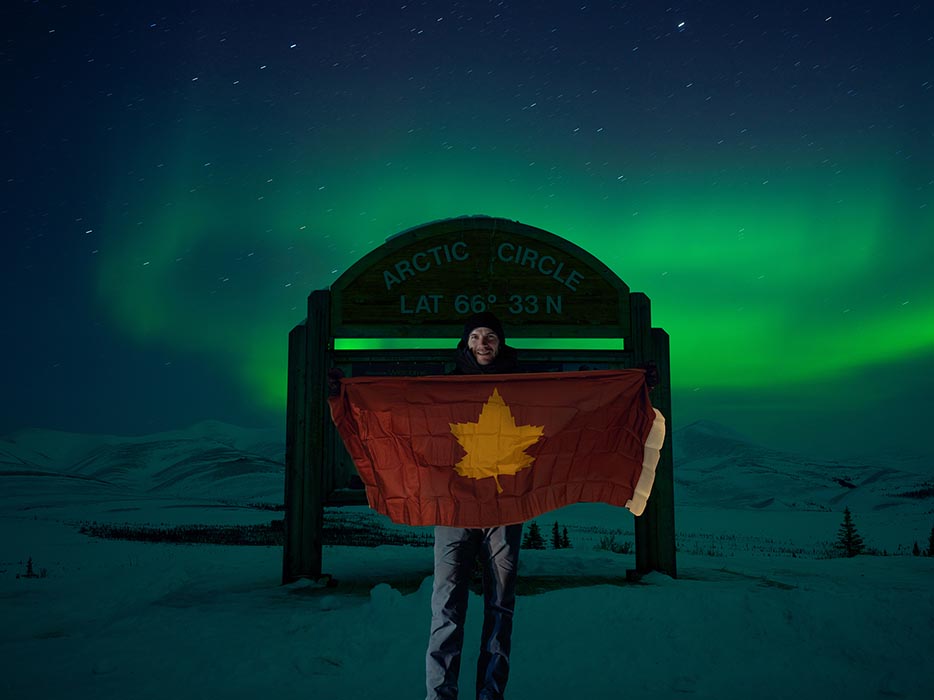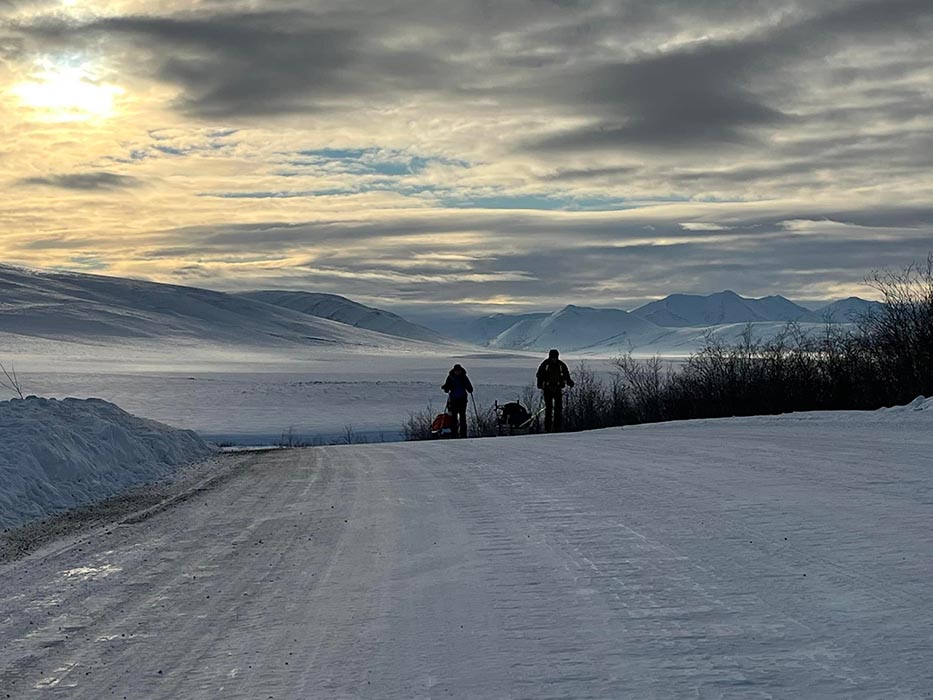A Canadian Combat Support Brigade Officer’s Trek Through Canada’s High North
Article / March 14, 2022 / Project number: 22-0011
Note: to view additional photos, click the photo under Image Gallery.
By Major Simon “Si” Tucker, Regimental Operations Officer, 21 Electronic Warfare Regiment
The 6633 Arctic Ultra event is typically a 611-kilometre race from just shy of the Arctic Circle to the shores of the Arctic Ocean at Tuktoyaktuk, Northwest Territories. This year, due to COVID-19 restrictions, the race was licenced to operate for only 408-km in the Yukon and participation limited to ten runners. All of the competitors had pedigrees in ultra-racing and many had experience on the course itself too. Alas, I was one of the newbies, though having trained in Canada I was more aware than some of the conditions we could encounter.
Most competitors – including myself – arrived in Whitehorse, Yukon three days early for kit checks and acclimatisation. For us, travel was horrendous with nearly every competitor missing bags from their flight. I was missing the all-important home-built sled. When all the equipment finally arrived at the last second, it became clear that I was the only racer with a home-built design, which would either give me a marked advantage, or not...
After a long drive from Whitehorse up to Dawson City, I had a terrible night's sleep. I think the nerves of the race were getting to most people and the WhatsApp Group was pinging from about 3 a.m. onward on race-start day. A hearty breakfast and drive to the start-line and all ten competitors were ready to go. At midday on February 26, we observed a moment of silence for those in strife in Ukraine before we began the mammoth trek to the Arctic Circle. The race began very quickly, with the front runners making over 7km/h which is incredible for such a long race. I sat back in third place expecting to hear that they had burnt out by the 80km mark, however after the first 10 hours of marching, I heard they were still going strong! I pulled up for a 1-hour power nap to prepare me for a night of marching (and catching up). It was early on that I teamed up with another competitor with the ambition of catching the break-away front and pushing them back. Despite being a solo event, teamwork helps to identify errors of personal administration that would otherwise hinder one’s progress. Similar to a peloton in cycling, teaming up actually drives the race faster. The pressure was too much for one of the front runners who retired early although the leader continued to grow stronger and even opened his lead up.
The race was more hilly than expected; in fact, is was fairly mountainous in places. Following the Dempster Highway as it weaved between mountains was absolutely incredible sight at night as the Aurora Borealis pierced through the gaps between mountains. My race partner and I were making good progress and keeping the favourite pegged to fourth place whilst we enjoyed joint second and were closing on the leader, however, a series of minor mishaps changed the race for both of us…
We had been relatively well-rested and were making good progress when we decided to delay a one-hour sleep stop for an extra 1km of distance. This 1km extra marching led us into an avalanche field where we could not stop, and so, 20km later, we emerged desperate for sleep. We settled down at the earliest spot, having lost second place and with the gap between us and first place growing. And then it got worse…
Little did we know that we had set up our bivvies 20m from a frozen lake! From getting into our sleeping bags at a tepid -20°C, an hour later it had plummeted to well below of -35°C. This is where the teamwork really paid off, as we both recovered strong from the errors and hit the road and fast (with few additional errors). We had already paid the price though. Two hours after that low point we thought we were onto a good recovery and back to making better pace than those in front of us when my home-made sled decided to pay the ultimate compliment - catastrophic failure - the axle literally sheared in two and I was left with a hulk of metal and plastic to drag for a further 160km. By this point half of the competitors had already given notice that they could not complete the full 408km and the organisers were keen to see finishers, so they agreed that so long as I wasn't in contention to win, I could replace my sled with one from a competitor who would not finish. This was a huge relief and we set about making progress into the most mountainous (and absolutely stunning) part of the race.
Racing in Arctic conditions requires well-rehearsed systems. I knew exactly where my water and food were stored and how to access it to eat and drink on the move on my home designed sled. The new sled had no such systems and so every routine I had practice I had to re-learn on the race. The only surviving routine I retained was my use of a small polystyrene box "kitchen" to cook rations on the move; this "kitchen" is an innovation I expect to take off in future arctic races
As the trail weaved up and around peaks of the Ogilvie Mountains the vastness of the Yukon could be seen. I have never seen such beauty! Canada really does have a hidden gem up in its extreme north. I was still with my racing partner as we had decided we were making better ground together. Even though both of us had it in us to go much faster as individuals in the short term, the teamwork made the opportunity of "future-speed" worth it and having the company definitely made it a more enjoyable experience. We took a long pause to regroup following a tough middle stage, but this was by no means the end of our competition. We knew that the leader and the second place were not as rested as we were, and their tiredness and isolation would lead to errors. In the last 100 km of the race we made great pace, faster than both the first and second place, in the hope that we would be able to capitalize if the front runners were unable to handle the final section in their fatigued state. Unfortunately for us, our long stop had set us too far apart and no matter what weight we ditched, we just couldn't close the gap enough.
Rio, an 18 year old Canadian with only a few months of training in the Yukon finished the race as an incredibly convincing winner. We had all underestimated his mental fortitude to go it alone, and to handle the pressure of everyone chasing him down. Ultra racing often does fall to more experienced runners precisely for that reason - the mental fortitude required is something usually earned, like wisdom, over many years of racing. He did brilliantly. Hilary (my race teammate) and I pulled into the finishing line at the Arctic Circle 20 hours after Rio with the stars out as bright as I have ever seen them and the Aurora Borealis dancing all around our heads.
Despite my inability to really get into the fight, this was a race I will never forget. I was sponsored by the CAF for this race and I encourage others to accept new challenges and push themselves forward. For me, it was the race of a lifetime that finished in the most spectacular way.


